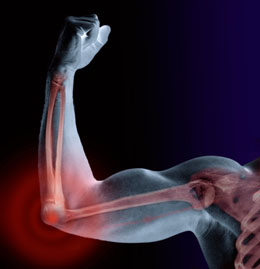Lactic acid is basically a chemical compound, that is an important element for some biochemical processes. This article deals with buildup of this compound in the muscles.

One of the most prevalent beliefs among people, especially those who exercise regularly and vigorously and those related to athletics, is that the buildup of lactic acid in muscles following an intense bout of training, causes the muscles to get stiff and sore. Despite much evidence to the contrary, people still continue to cling tenaciously to this belief and it makes one wonder why. Let us examine some facts about this physiology of exercise and the important role of lactic acid in it.
Causes
Humans, like most of the species on earth, have evolved to respire aerobically. We use oxygen to derive energy out of glucose for all processes in the body, and our muscles are no exception. This process is called aerobic respiration. During this process, glucose is converted to an intermediate called pyruvate, which then goes on to take part in further reactions to produce energy. But, at times, one might require energy at a much faster rate than this system can produce. The demand for oxygen far exceeds its supply, such as during short but intense bouts of activity. The muscle then switches over to an alternate pathway, in which pyruvate is converted to lactate (or lactic acid, its unionized form). This is called anaerobic metabolism. The problem is that, after being formed, lactic acid has nowhere to go for a while - it does not enter any reaction pathway immediately and so, simply accumulates or "builds up", in the muscles.
This buildup, however, does not occur at the same time in any two individuals even if they do the same amount of activity, as it depends on something called the lactate threshold. This is the point during exercise/activity, when lactic acid buildup actually begins to start in the blood. Symptoms such as fatigue, burning sensation in the muscles, and others occur much faster if a person's lactate threshold is low. The good news is that it increases with exercise and prolonged training. The more you train, the more your body learns to adapt to the level of lactic acid accumulating in the muscles.
Effects
The immediate cause of a buildup of lactic acid is a change in the pH of the muscle cell and a slowing down of the cell's metabolism. The lactic acid needs to be flushed out before the muscle can return to its original efficiency. This process takes an average of 30 minutes.
One of the effects of strenuous exercise, which is wrongly attributed to lactic acid, is Delayed Onset Muscle Soreness (DOMS). This is simply the muscles becoming stiff and sore a day or two after exercise. It was widely held that lactic acid is responsible for this. However, a lot of research has revealed that lactic acid is gone in about a half hour or so from the muscles, and so cannot be responsible for DOMS. Current research suggests that it is due to injury to the muscle fibers during exertion. Inflammatory chemicals released after strenuous activity heal the muscle fibers, but also cause soreness in muscles.
Another effect of lactic acid buildup in muscles is lactic acidosis. This is a transient effect and does not have major effects on a person's health. Its symptoms are nausea, vomiting, hypotension, abdominal discomfort and pain, etc.
Despite all the myths surrounding the effect of lactic acid buildup, it is now clear that it is not the primary cause of the pain, stiffness and sore muscles after exercising. The key to dealing with it is to learn when to stop and let your muscles recover.


 One of the most prevalent beliefs among people, especially those who exercise regularly and vigorously and those related to athletics, is that the buildup of lactic acid in muscles following an intense bout of training, causes the muscles to get stiff and sore. Despite much evidence to the contrary, people still continue to cling tenaciously to this belief and it makes one wonder why. Let us examine some facts about this physiology of exercise and the important role of lactic acid in it.
One of the most prevalent beliefs among people, especially those who exercise regularly and vigorously and those related to athletics, is that the buildup of lactic acid in muscles following an intense bout of training, causes the muscles to get stiff and sore. Despite much evidence to the contrary, people still continue to cling tenaciously to this belief and it makes one wonder why. Let us examine some facts about this physiology of exercise and the important role of lactic acid in it.